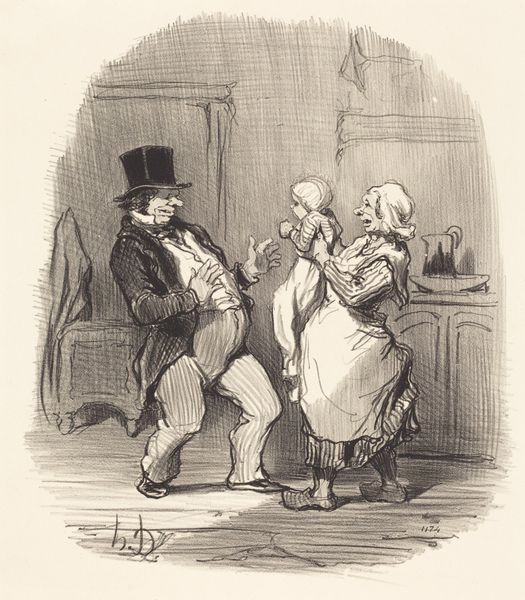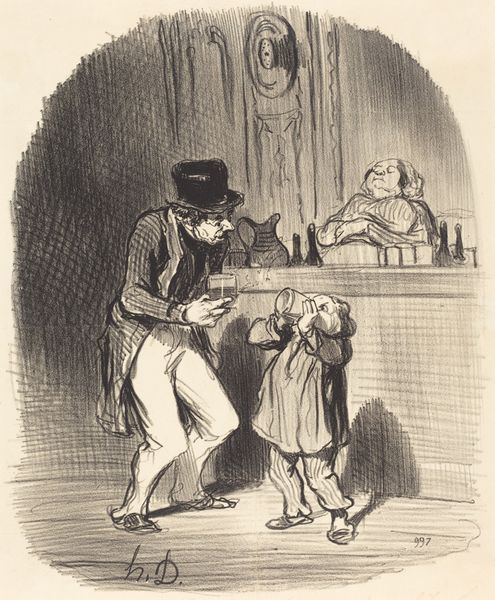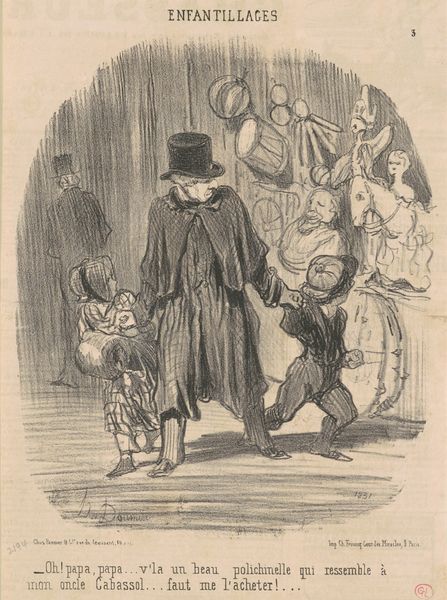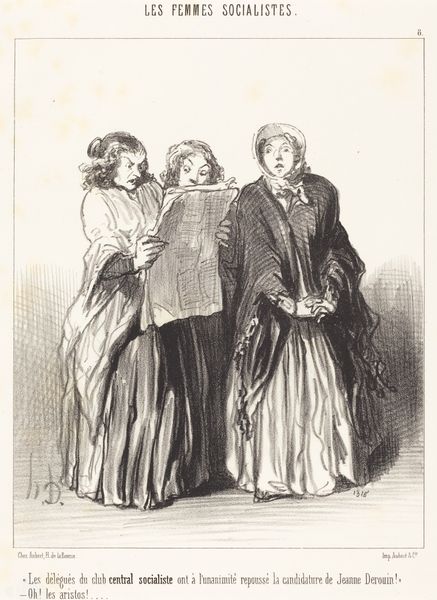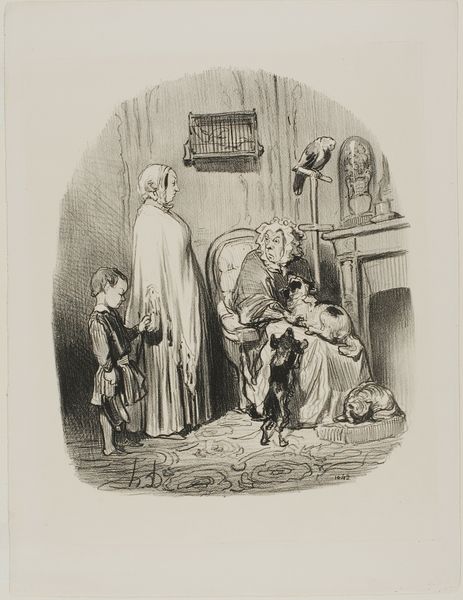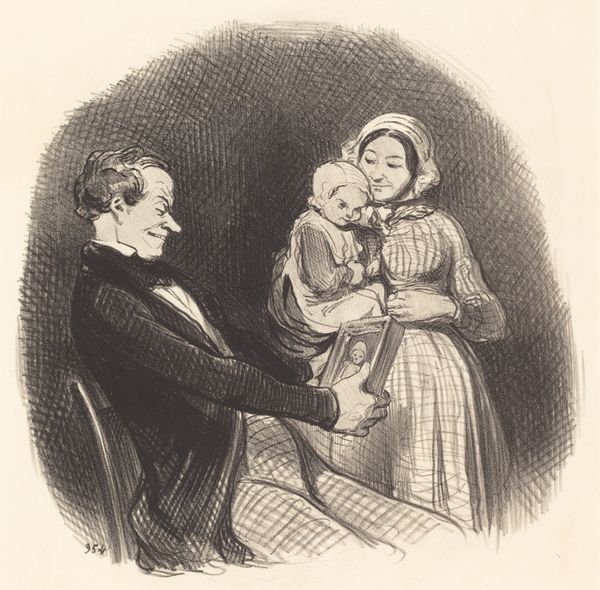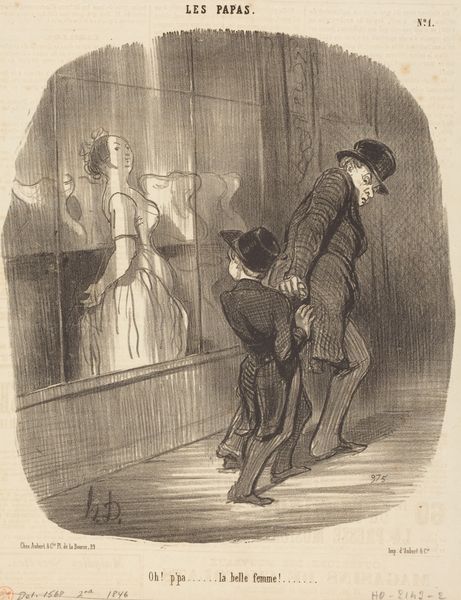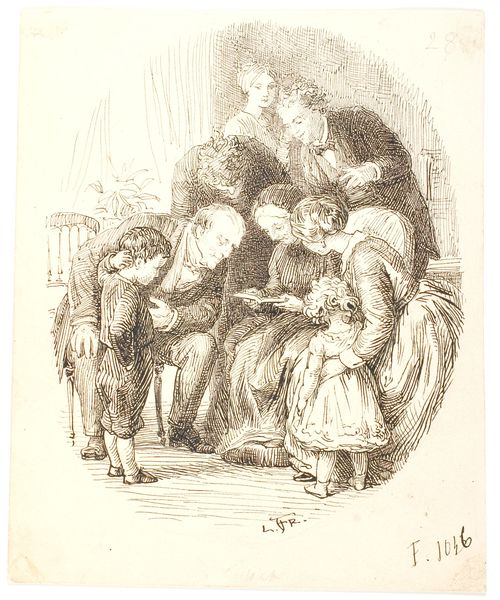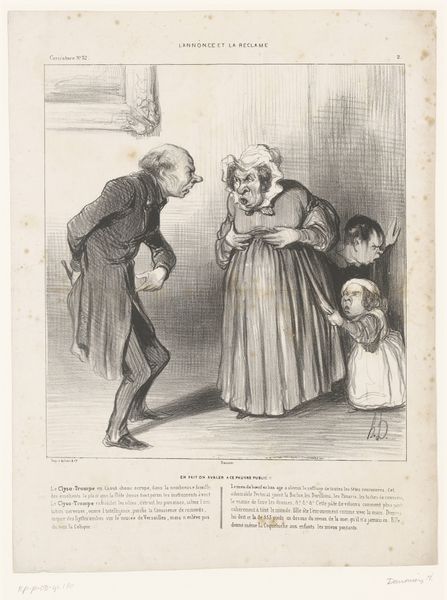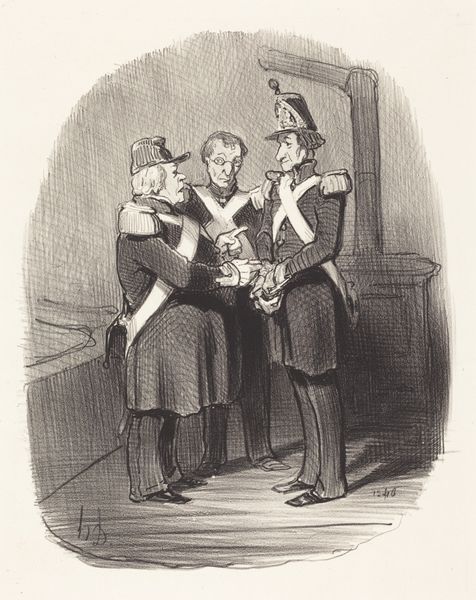
lithograph, print
#
imaginative character sketch
#
quirky sketch
#
lithograph
# print
#
caricature
#
cartoon sketch
#
personal sketchbook
#
idea generation sketch
#
sketchwork
#
romanticism
#
pen-ink sketch
#
sketchbook drawing
#
genre-painting
#
storyboard and sketchbook work
#
fantasy sketch
Copyright: National Gallery of Art: CC0 1.0
Honoré Daumier made this lithograph of a family visit sometime in the 19th century. Daumier was renowned for using lithography, a printmaking technique that relies on the chemical repulsion between oil and water. He drew directly onto a stone with a greasy crayon, then treated the stone with chemicals. The image is transferred to paper through a printing press. The beauty of lithography is its directness. Daumier's marks are incredibly gestural. The resulting print retains a sense of the artist's hand, a quality that aligns it more closely with drawing than with industrial production. This directness is evident in the figures' expressions and postures. Yet, lithography was also a commercial medium, ideal for mass production and distribution. Daumier used it to create satirical commentaries on French society for newspapers and journals. In his hands, lithography becomes a powerful tool for social observation, blurring the lines between art, craft, and social commentary. It invites us to consider the social context in which art is made and consumed.
Comments
No comments
Be the first to comment and join the conversation on the ultimate creative platform.

